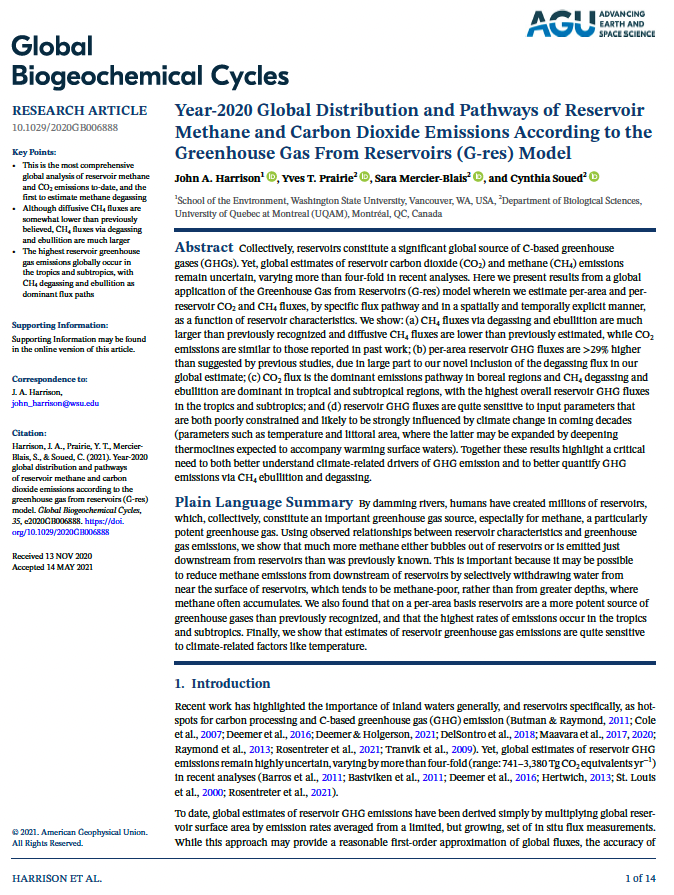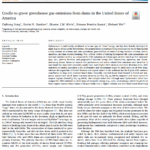Abstract
Collectively, reservoirs constitute a significant global source of C-based greenhouse gases (GHGs). Yet, global estimates of reservoir carbon dioxide (CO2) and methane (CH4) emissions remain uncertain, varying more than four-fold in recent analyses. Here we present results from a global application of the Greenhouse Gas from Reservoirs (G-res) model wherein we estimate per-area and per-reservoir CO2 and CH4 fluxes, by specific flux pathway and in a spatially and temporally explicit manner, as a function of reservoir characteristics. We show: (a) CH4 fluxes via degassing and ebullition are much larger than previously recognized and diffusive CH4 fluxes are lower than previously estimated, while CO2 emissions are similar to those reported in past work; (b) per-area reservoir GHG fluxes are >29% higher than suggested by previous studies, due in large part to our novel inclusion of the degassing flux in our global estimate; (c) CO2 flux is the dominant emissions pathway in boreal regions and CH4 degassing and ebullition are dominant in tropical and subtropical regions, with the highest overall reservoir GHG fluxes in the tropics and subtropics; and (d) reservoir GHG fluxes are quite sensitive to input parameters that are both poorly constrained and likely to be strongly influenced by climate change in coming decades (parameters such as temperature and littoral area, where the latter may be expanded by deepening thermoclines expected to accompany warming surface waters). Together these results highlight a critical need to both better understand climate-related drivers of GHG emission and to better quantify GHG emissions via CH4 ebullition and degassing.
Key Points
- This is the most comprehensive global analysis of reservoir methane and CO2 emissions to-date, and the first to estimate methane degassing
- Although diffusive CH4 fluxes are somewhat lower than previously believed, CH4 fluxes via degassing and ebullition are much larger
- The highest reservoir greenhouse gas emissions globally occur in the tropics and subtropics, with CH4 degassing and ebullition as dominant flux paths
Plain Language Summary
By damming rivers, humans have created millions of reservoirs, which, collectively, constitute an important greenhouse gas source, especially for methane, a particularly potent greenhouse gas. Using observed relationships between reservoir characteristics and greenhouse gas emissions, we show that much more methane either bubbles out of reservoirs or is emitted just downstream from reservoirs than was previously known. This is important because it may be possible to reduce methane emissions from downstream of reservoirs by selectively withdrawing water from near the surface of reservoirs, which tends to be methane-poor, rather than from greater depths, where methane often accumulates. We also found that on a per-area basis reservoirs are a more potent source of greenhouse gases than previously recognized, and that the highest rates of emissions occur in the tropics and subtropics. Finally, we show that estimates of reservoir greenhouse gas emissions are quite sensitive to climate-related factors like temperature.
Authors: John A. Harrison, Yves T. Prairie, Sara Mercier-Blais, Cynthia Soued


